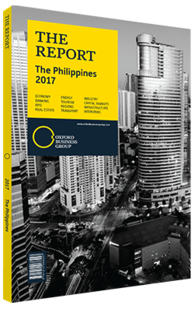Philippines' 2017 budget prioritises transport and infrastructure
Transportation and infrastructure development in the Philippines received a major boost with the unveiling of the 2017 budget – the largest ever passed in the country. The Department of Transportation (DoT) and Department of Public Works and Highways (DPWH) will both benefit from a double-digit spending increase, with funds to be used for a series of major upgrades that should kick-start President Rodrigo Duterte’s ambitious infrastructure agenda. The knock-on economic benefits are significant, particularly if the country continues to reduce implementation efficiencies that have weighed on project delivery in the past.
Record Budget
In August 2016 the Department of Budget and Management submitted a proposed P3.4trn ($71.9bn) national budget to the House of Representatives, an 11.6% increase over 2016 levels. The budget, which was signed into law on December 22, 2016, will see a notable spending increase for a host of government agencies. The DPWH is one of the largest beneficiaries in the 2017 budget, with spending set to rise by 18.3% to reach P454.7bn ($9.6bn). The DoT, meanwhile, will see spending rise 25% over 2016 levels for a total of P53.3bn ($1.1bn). On top of these increases, an additional P850bn ($18bn) was allocated for the construction of road networks and transportation infrastructure, with the goal of reducing congestion and improving the country’s business climate. These allocations bring the total dedicated transportation and infrastructure spending to P1.4trn ($29.6bn), making it the largest public spending recipient in 2017.
Economic Benefits
The spending increase offers significant benefits, not just to transportation and infrastructure, but to the wider Philippine economy. A February 2016 report by the IMF examined improving public infrastructure either through a public-private partnership (PPP) programme or by boosting public investment to 2% of GDP and financing the spending by borrowing or tax increases. The report found that increasing public investment would lead to significant economic gains and a sustained output increase, with real GDP forecast to rise 4.5-6% in the next 15 years, even if investment efficiency does not improve.
Challenges
The 2017 budget has faced some criticism, however, after senators called into question a number of lump-sum allocations set for the DPWH. Many line items from the DPWH budget were pointed out as being too vague, including a P500m ($10.6m) item described only as “central office”. Senators also questioned a P9bn ($190.4m) lump-sum outlay for right-of-way acquisitions, P5bn ($105.8m) for unspecified completed projects and P4.1bn ($86.7m) for unspecified ongoing projects. One senator later compared the DPWH’s 2017 budget outlays to the country’s Priority Development Assistance Fund – or pork barrel scam – in which several members of Congress were accused of financial mismanagement of lump-sum discretionary funds meant for priority development projects.
Implementation Efficiency
Indeed, weak implementation could present a challenge to infrastructure development and economic growth, with the IMF reporting that the Philippines should strengthen the link between planning and budgeting to fully realise the benefits of rising public investment. The IMF identified priorities, including undertaking a critical review of the stock of development projects in order to eliminate unnecessary or duplicated projects; anchoring planning in a medium-term resource framework; improving high-level coordination; and strengthening the gate-keeping role played by budget agencies. However, the fund notes that the country has already made good progress towards improving efficiency. In 2015 the government moved to release budget funds early in the year, which helped eliminate procurement bottlenecks. Further improvements would offer even more economic benefits, and the IMF reported that if half of the country’s current public investment implementation inefficiencies were eliminated in five years, the increase in real GDP after 15 years would be between 9% and 11%.
You have reached the limit of premium articles you can view for free.
Choose from the options below to purchase print or digital editions of our Reports. You can also purchase a website subscription giving you unlimited access to all of our Reports online for 12 months.
If you have already purchased this Report or have a website subscription, please login to continue.

